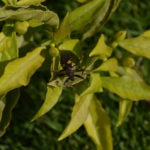
How Certain Sandy Pests Disguise Themselves
There are a few methods home and building owners have for detecting pest issues in their structures, and one of the simplest is the human eye. Identifying pests based on visual cues is often one of the most effective ways — but what happens when the pest in question has the ability to change or hide the way it looks to your eyes?
At Bug Busters, we’re happy to offer a wide range of commercial and residential pest control services in Sandy and other parts of Utah, including for pests that are known to change their appearance or otherwise hide themselves visually from human eyes. What are some of the basic methods certain pests use to disguise themselves, and how can you identify them despite these methods? Here’s a basic primer.
Color or Camouflage
Perhaps the most common form of disguise that a few different pest types can perform is changing color or camouflaging themselves to blend in with the surrounding environment. Bugs like lady bugs are well-known for this, spending their larval stages as colorful little creatures before they turn into winged adults that can be nearly impossible to spot on certain plants or trees.
Ants are also well known for their color shifting abilities, which allows them to travel undetected through walls, under flooring, and more. And while they’re not particularly common around homes in Utah, maybe the most famous example of a camouflaging animal is the snake, which has the ability to change its coloration and even mimic other animals, plants, or objects.
Look-Alikes
Another method some pests have for staying safe from prying human eyes is evolving to look like other species, whether they’re insects with wing coloration that makes them look like wasps, beetles, or something else entirely — many pests are starting to share colors and patterns in order to make it more difficult for humans to track their presence.
One example here is bumblebees, wasps and hornets, which all share colors and basic markings and can easily be mistaken unless individuals know what to look for.
Metamorphosis (Changing Appearance)
Finally, certain insects actually change in appearance as they age, a process known as metamorphosis. This change can take place in different ways, such as moths that go through a cocoon stage or butterflies that have immature, larval stages before they become adults with wings for flight. The methods here are especially effective because the insects can actually look very different throughout their lifetime.
At Bug Busters, we’ve been helping clients deal with camouflaged or otherwise disguised pests for years, and we’ll assist you with everything from pest identification through eradication. For more on this, or to learn about any of our Sandy pest control services, speak to the staff at Bug Busters today.
